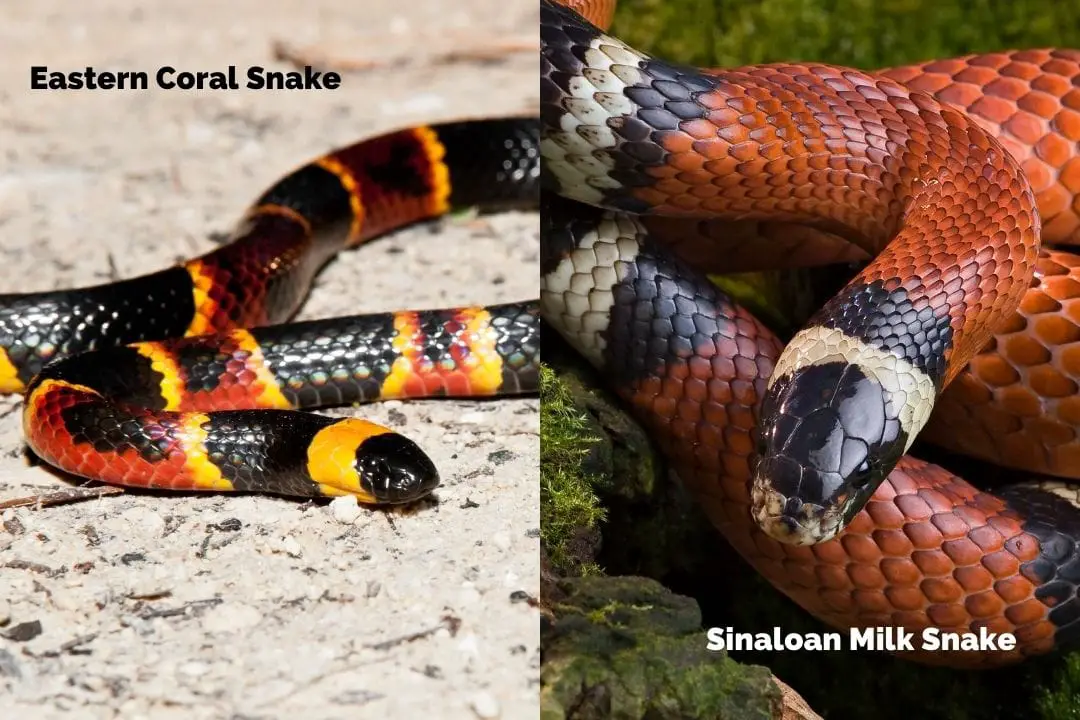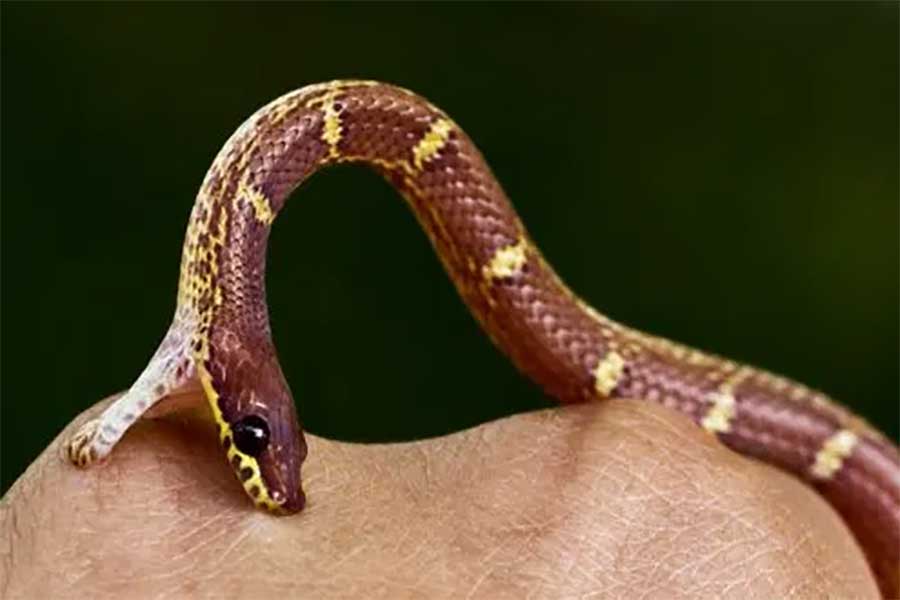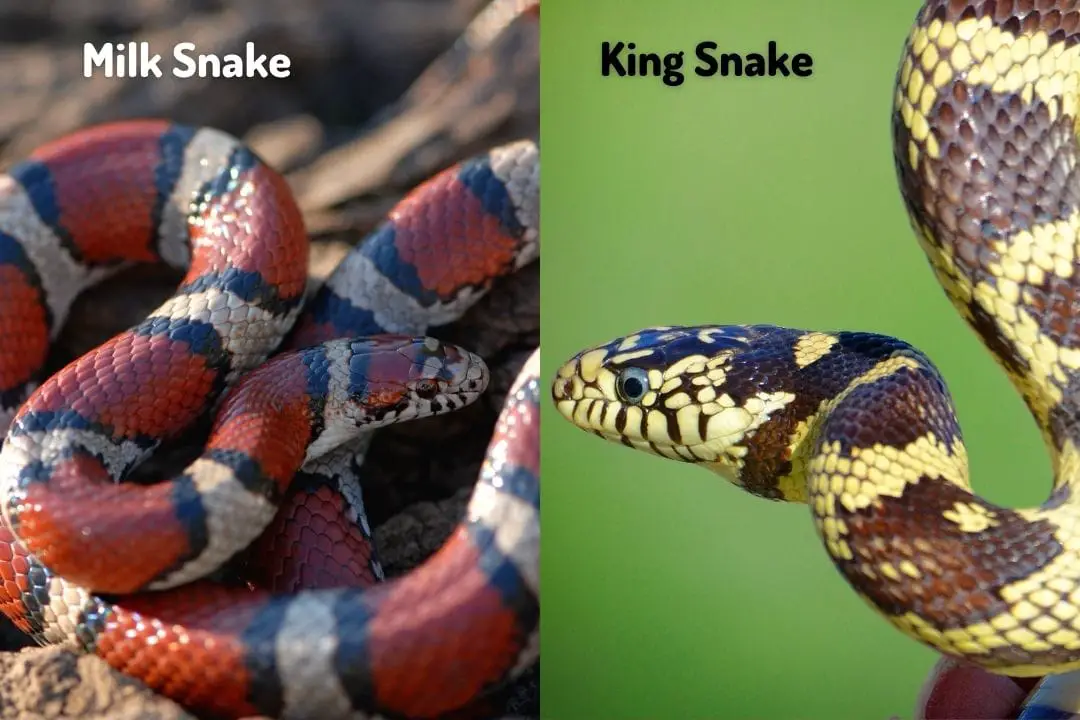The milk snake is one of the world’s most popular snakes to keep as a pet because of how it is said to be very safe. However, it can be easy to mistake it for the coral snake in the wild, because they actually have similar appearances.
This may end up becoming confusing because of how some people might mistake a milk snake for a coral snake or vice versa.
So, what are the differences between the milk snake and the coral snake?
Milk snakes have red bands with black rings on either side while coral snakes have red bands with yellow rings on either side. Milk snakes are non-venomous snakes while coral snakes are actually venomous. And coral snakes are also a lot bigger than the smaller milk snakes, which are usually less than three feet long.
Knowing the differences between the milk snake and the coral snake can be a matter of life and death. That’s why there is a popular saying that goes “Red on yellow, kill a fellow. Red on black, venom lack” to describe the coral snake as something that is dangerous in comparison to the milk snake. So, let’s get to know more about what makes these snakes different from one another.
Appearance
Milk snake
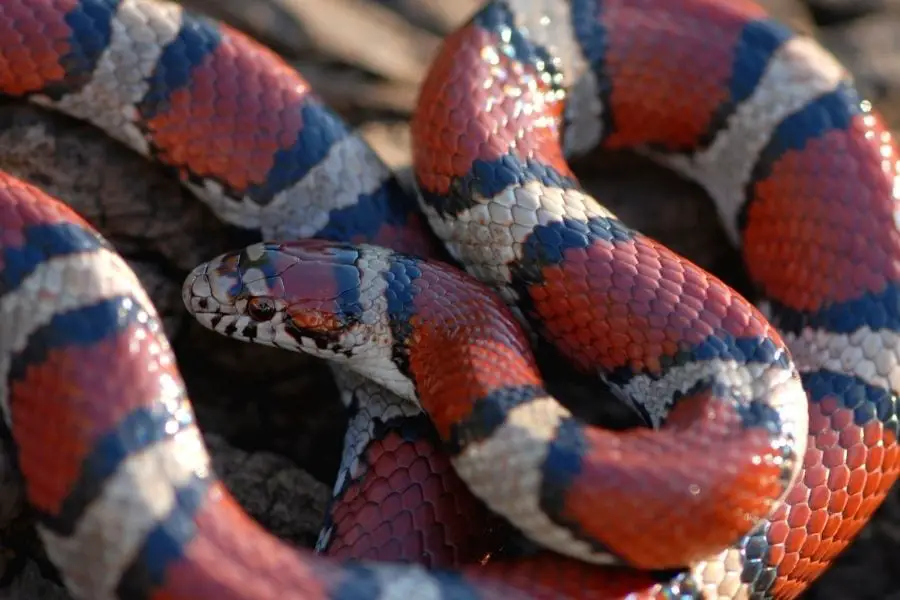
The milk snake is a beautiful and colorful snake that comes in a wide variety of different colors. Meanwhile, most milk snakes come with alternating bands of colors.
These colors usually have a red-black-yellow or white-black-red pattern. However, there are some milk snakes that don’t have bands but actually have blotches, which are some of the things that are quite common in most snake species around the world.
Coral snake
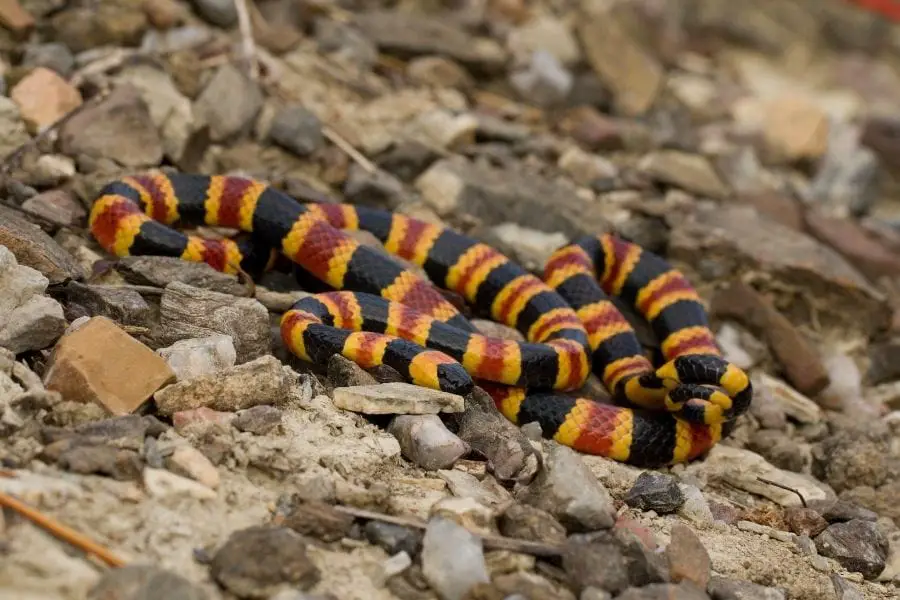
This is usually where it gets very confusing because the milk snake resembles the coral snake eerily to the point that some people might have gotten themselves in danger when they mistook a coral snake for a milk snake. As such, it is needless to say that the coral snake looks similar to that of the milk snake.
The coral snake also comes with bands that are red, yellow, and black but the difference here is that coral snakes come with a pattern of red-yellow-black wherein the yellow bands will always touch the red bands unlike milk snakes, which have yellow and red bands separated by a black band.
A common saying that allows people to differentiate milk snakes from coral snakes is “Red on yellow, kill a fellow. Red on black, venom lack”.
Size
Milk snake
The milk snake is one of the smallest species of snakes as they rarely grow over 60 inches long. Most milk snakes are actually less than three feet in length.
Because these snakes are small, they make for great household pet reptiles because they don’t need to stay in large tanks. The size of the milk snake also allows it to be a great snake for handling due to how it isn’t too heavy or large for anyone to handle.
Coral snake
The coral snake is also a small snake when compared to some of the larger venomous snakes in the world. However, coral snakes are at least three feet long most of the time and are usually a lot longer and bigger than milk snakes.
While the size difference may be hard to tell at first glance, you can see how coral snakes tend to dwarf their milk snake counterparts when they are placed side by side.
Venom
Milk snake
One of the reasons why the milk snake is one of the safest pet snakes to keep for many households and reptile enthusiasts is that they are non-venomous snakes that don’t have venom sacs or fangs that allow them to deliver venom.
In fact, milk snakes are usually gentle and docile snakes that can be handled well enough unless they are stressed.
This means that they are less likely to bite than most other snakes. And even if a milk snake bites you, its bite is usually harmless and is unlikely to draw blood because of how the milk snake has small teeth that won’t easily break the skin.
Coral snake
The reason why you should know the differences between the milk snake and the coral snake is that the coral snake is a venomous snake that has a venom sac and fangs that are connected to the sac so that it can deliver its venom to its prey.
However, the coral snake has small fangs that tend to be inefficient for venom delivery. This means that, when they bite, they tend to hold onto their prey while chewing so that they will be able to deliver more venom.
A coral snake’s venom is actually quite potent and has the second-deadliest venom in the world.
But the problem is that coral snakes have poor venom delivery systems that hinder them from delivering enough venom to put a person in immediate danger.
However, this can still lead to certain complications that can make a person fall ill. This includes nausea, vomiting, numbness, and drooling. It is rare for a person to die from a coral snake bite but it still can happen when a coral snake bite isn’t treated right away, and that is why it is important for you to seek medical help when you are bit by a coral snake.
Habitat
Milk snake
The milk snake can be found almost anywhere in the world, and that is the reason why there are plenty of different subspecies of milk snakes. These snakes can be found in forested regions but can also be found in populated areas because they tend to follow where humans are due to how human populations tend to attract rodents as well.
Milk snakes can also be found in rocky slopes and have habitats that really vary depending on the subspecies of milk snakes.
Coral snake
Coral snakes, even though there are also plenty of subspecies of coral snakes, are much more focused in terms of where they are found.
These snakes are much more common in temperate regions, and that is why they can be found in places such as Arizona, Texas, and Florida.
Coral snakes also like staying in forested jungle areas and can be found in leaf piles or burrows. So, if you don’t live in temperate areas and you live in northern regions, it is unlikely that you would encounter a coral snake.
Temperament and behavior
Milk snake
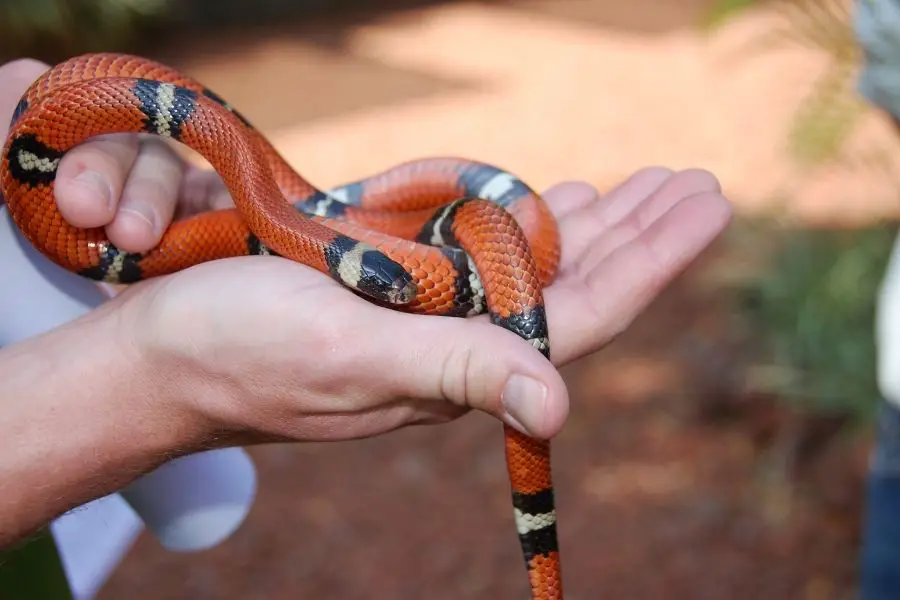
When it comes to their temperament, the milk snake is an ideal pet snake because of how it is receptive to getting handled and is unlikely to show any aggression towards the person handling it.
Milk snakes rarely behave aggressively unless they have associated your hand with food or whenever they are actually stressed such as when they are on the defensive or when they are shedding. As such, you shouldn’t worry too much about the milk snake.
Coral snake
The good news about the coral snake is that these snakes are not the most aggressive venomous snakes in the world and are only likely to bite humans whenever they are on the defensive. In fact, only about a percent of the snake bites in the US can be attributed to coral snakes because of how these snakes are not as aggressive as their other venomous counterparts.
However, even though the coral snake is not aggressive, it is not advisable that you try to trap it or capture it on your own because of how all snakes can get quite defensive when they are provoked. When it is on the defense, a coral snake will bite you, and this can be quite dangerous considering how potent a coral snake’s venom is.
Milk snake vs. coral snake: Summarizing the differences
Now that you know more about the milk snake and the coral snake, let us look at their major differences so that it would be easier for you to differentiate the two whenever you come across a snake that may look like the milk snake.
For one, the coral snake has red bands that have yellow bands that touch them. This is different from the milk snake, which has red bands that have black bands touching them. A coral snake will also most likely have a black head compared to a milk snake, which has a head that comes with lighter coloration. And there will be times when a milk snake doesn’t have bands but has blotches instead while a coral snake will always have bands.
Milk snakes are also the smaller of the two snakes even though coral snakes may not look like they are larger at first glance. But when you try to measure them in by inch, the coral snake will always be larger than the milk snake.
Of course, milk snakes are non-venomous snakes that are safe to keep as pets due to how they pose little to no danger to a person’s life. You can’t say the same about the coral snake because of how this snake has a pretty potent venom that can end up endangering a person’s life.
Everything you need to know about caring for Milk Snakes in captivity:
Read our Milk Snake Care Sheet (Complete Guide)
Sources
https://myhealth.alberta.ca/HEALTH/Pages/conditions.aspx?hwid=th1330
https://www.wikihow.com/Tell-the-Difference-Between-a-Milk-Snake-and-a-Coral-Snake
